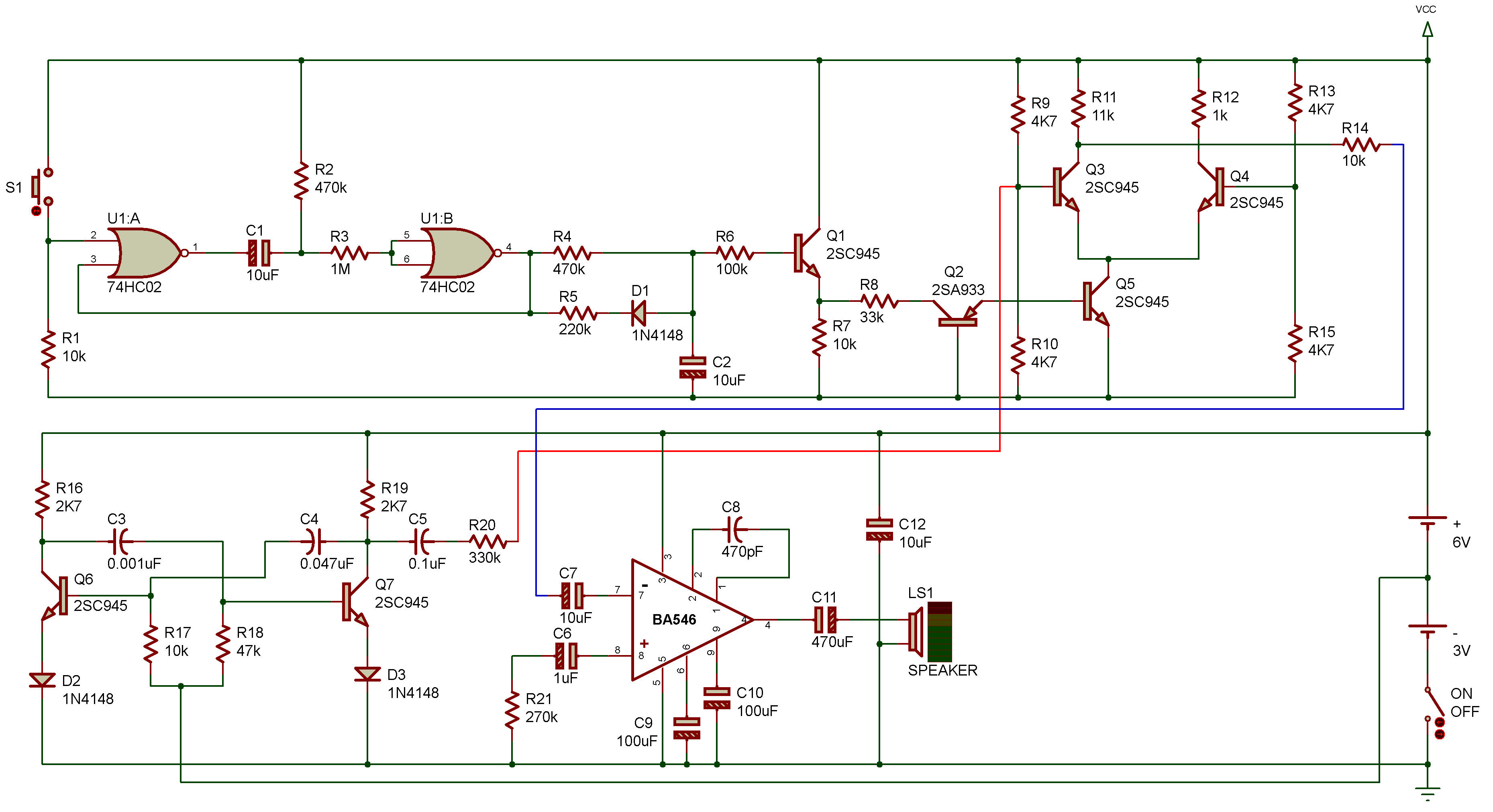
Sound of passing siren BA546
74HC02

In this project, you are going to generate a passing sound of a siren. Imagine that a motor car emitting sound by a siren passes just in front of you. The sound gets louder as the car comes closer to you, and once the car has passed you, the sound becomes quieter. (In reality, the passing sound changes in frequency, a phenomenon known as the Doppler effect. In our project, however, the frequency will be fixed.)
When you finish wiring, turn power ON, then press S1. This generates the passing sound.
When you change C3 and C4, the pitch of the sound changes. When you change C1, the duration changes. Changing R4, R5, and C2 changes the tone.
In the schematic diagram, U1 provides a circuit that determines the duration of the passing sound, Q1 - Q5 serve as VCO controlling the level of the sound, Q6 and Q7 are multivibrators generating the sound, and U2 BA546 is a speaker driving amplifier.
C1 and R2 determine the duration of the approaching sound; over this duration, the sound becomes larger with a time constant of C2 x R4.
The receding sound, on the other hand, becomes smaller with a time constant of C2 x R5.
When the key S1 is pressed, C1 is charged through R2. Until the charged voltage reaches the threshold of the NOR gate in the next stage, C2 is charged more and more through R4. Once the threshold is reached, C2 is discharged through R5. The speaker emits sound at levels corresponding to the changes of voltage level in C2.
